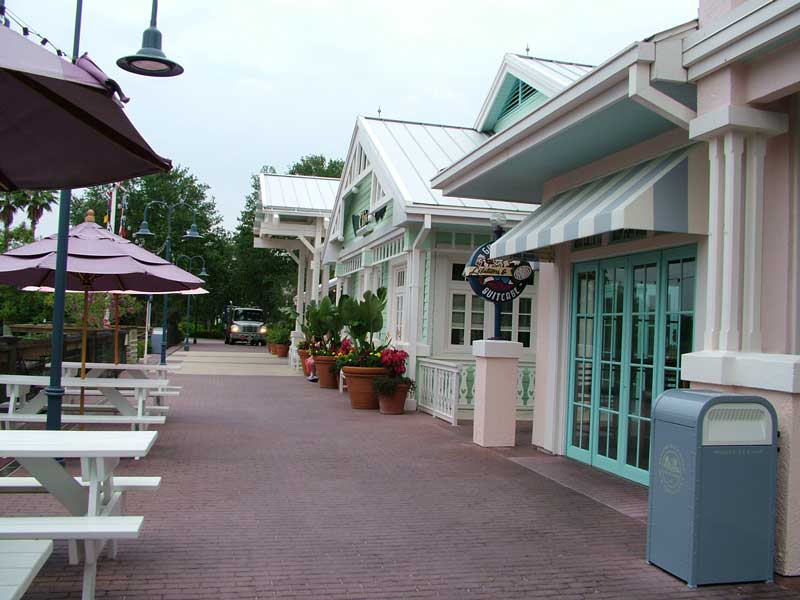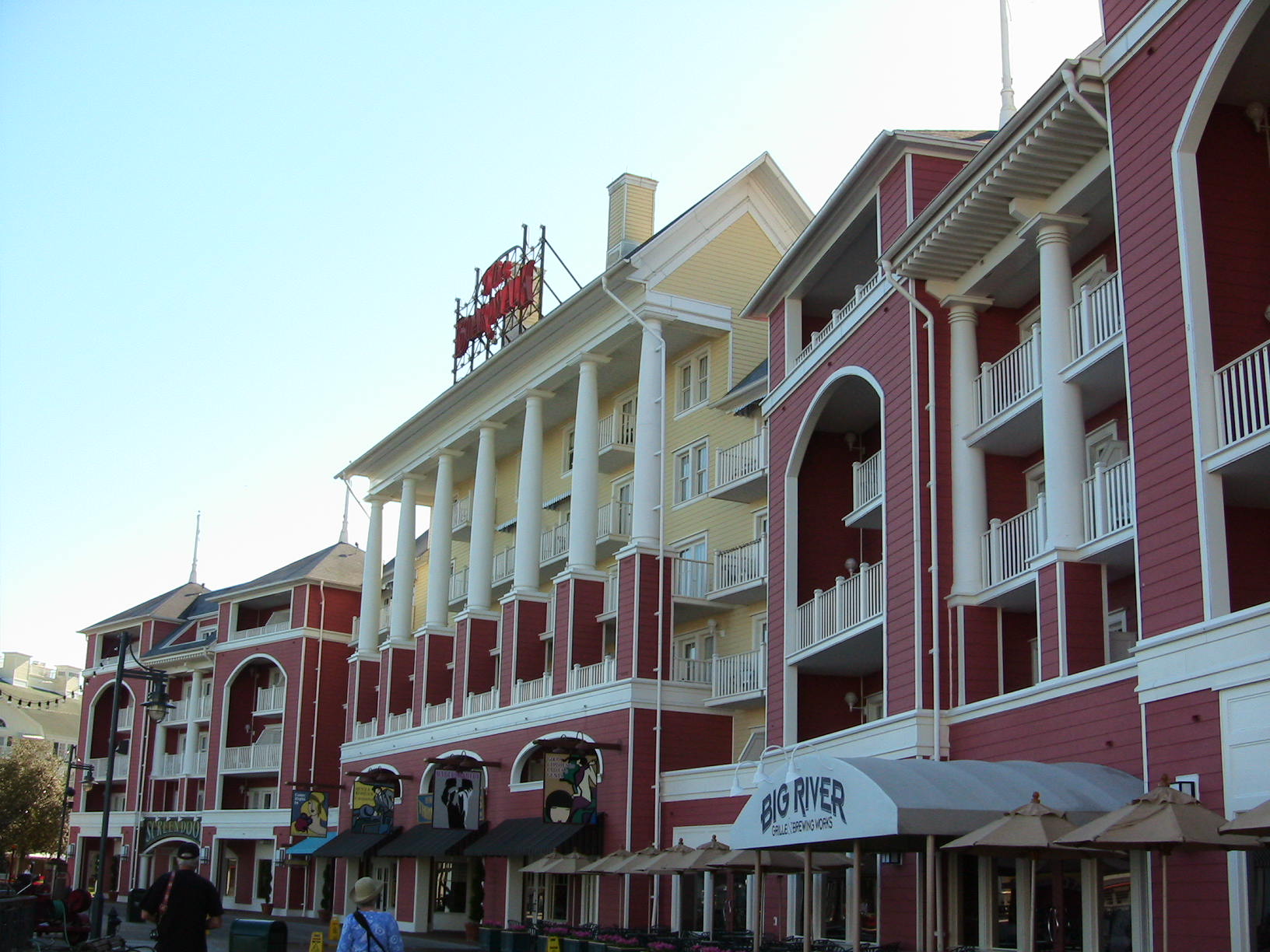As the 25th anniversary of the Disney Vacation Club approaches, this is a wonderful time for members to take a moment to look back. Let’s appreciate all the value that enrollment provides us. Thirteen of the most beautiful hotel resorts in the United States participate in the program. How we reached this point represents a fascinating journey with fluctuating plans for where Disney should locate each new property. Here’s a look at the first decade of DVC’s developments.
{multithumb thumb_width=600 thumb_height=450 thumb_proportions=bestfit}
Disney's Old Key West Resort
The thirteen resorts today are a far cry from the one hotel that launched the entire entity in 1991: Disney’s Old Key West Resort. In fact, Disney didn’t even name it anything that creative. Disney’s Old Key West Resort was originally known as The Disney Vacation Club Resort. It’s like they weren’t even trying, but an explanation exists for the humdrum identity of the initial DVC property.
Disney originally wanted to blur the lines between their resorts and the timeshares that were all the rage at the start of the 1990s. The original strategy wasn’t just to maximize onsite visitation at Walt Disney World and other theme parks. It was to launch a variety of Disney-themed hotels at many popular tourist locations, just as Walt Disney had once considered with aborted attempts at resorts in Colorado and New York. Clearly, Disney moved away from those Uncle Walt style plans over time.
Yes, the origins of DVC are imperfect, as is the case with most new business concepts. Over time, Disney improved their new vacation option from a single Walt Disney World location to multiple ones both near and away from parks. The most important step was in adding additional properties, and that wasn’t always a smooth process.
Did you know there was almost a Disney resort near Newport Beach, California? It’s true. Disney once considered a quarter-billion dollar property half an hour from Disneyland. It’s just a part of the amazing history of DVC. Disney’s early plans for DVC were to build several properties at popular vacation destinations across the country. They loved the idea of Disney lovers paying them for the option to stay at a hotel onsite, something many of them would have done anyway. That’s why they led with Disney’s Old Key West Resort and then explored the Newport Coast project. Of course, they recognized that not everyone could visit one of their vaunted theme parks each year, and even the ones who enjoyed the privilege may not want to do so annually. This explains why the first two expansions to DVC weren’t located near Disney theme parks.
In 1993, less than two years after the introduction of The Disney Vacation Club Resort in Orlando, Florida, Disney announced plans to build ambitious new properties in two beachfront areas. Their choices were Vero Beach, Florida, 100 miles north of Walt Disney World, and Hilton Head, South Carolina, southern resort destinations that could accentuate membership to the DVC clientele who already loved this region of the country.
Disney's Hilton Head Island Resort
Neither of these new resorts was particularly popular with the locals. In fact, Hilton Head landowners fought hard to prevent Disney from ruining their island with its populist clientele. Hilton Head’s origins are as elitist as anywhere in the south. The island was once so secluded that visitors had to pass a security clearance gate to proceed. The idea of Mickey Mouse fanatics running wild bothered a lot of residents despite the fact that the timeshare industry was already a major force in the area in 1993. They managed a pyrrhic victory by preventing some but not all the incursion. The reason Disney still lacks beachfront property in Hilton Head today is a negotiation that transpired more than two decades ago. Guests are happily willing to drive (or take a shuttle) the mile to the Disney-owned beachfront property, though.
The overriding strategy for both of these properties plus Newport Beach was the same overall. Disney wasn’t viewing DVC as a standalone entity reserved for increasing park occupancy and maximizing customer expenditures directly to their company. It was going to function like other hotel corporation timeshares such as Marriott. Disney wanted to leverage the appeal of their brand and the respect they’d built over decades into new market opportunities.
Think about the situation from their perspective. Building new theme parks costs billions of dollars. They could construct dozens of timeshare resorts for the same price, thereby creating an evergreen revenue stream. As the various vacation destinations increased in popularity, Disney’s timeshare interests would rise accordingly. There was just one problem. They didn’t receive the warm welcome they anticipated.
In Orlando, Florida, and Anaheim, California, the company had so much power and influence that they could basically call their own shots with regards to real estate law. In cities without a current Disney presence, they faced strong resistance, which is why the Newport Coast plan never got off the ground. It wasn’t for lack of trying, either.
Disney spent millions of dollars planning and adjusting to fit California’s odd combination of laws and environmental challenges. They tried for more than three years before eventually mothballing the Newport Coast project. An intended 650-room, $250 million investment into the California economy fell by the wayside. Amusingly, it wound up as a Marriott resort instead. Meanwhile, Disney’s Vero Beach Resort debuted in 1995, with Disney’s Hilton Head Island Resort following suit in 1996. In fact, the South Carolina property celebrated its 20th anniversary exactly one month ago on March 1, 2016.
After the struggles in new markets, The Walt Disney Company’s DVC planners decided to go back to basics. After they broke ground in Hilton Head and Vero Beach, they returned their focus to Orlando, the thriving pulse of Disney’s entire Parks and Resorts division. Park planners recognized that they had plenty of land behind the World Showcase, and it was a perfect location for a new hotel. They’d even eventually add a rear entrance to the park to make this hotel the most convenient one at all of Walt Disney World. There’s technically a 50/50 chance you’ve already guessed which resort this is, but unless you were a DVC member during the 20th century, you’re likely wrong.
In July of 1996, Disney’s Boardwalk Inn & Villas became the first new Epcot resort in the DVC program. It was the fourth DVC participant overall and the second one located at Walt Disney World. Inspired by the seaside districts in the Northeastern part of the United States, this hotel is also a throwback to what I like to call the "Bioshock: Infinite" era.
Resort planners were especially innovative with this entire area. As you know, The BoardWalk is an entire entertainment district that Disney built. The hotel side was also revolutionary at the time. It offered rooms at an Inn for paying guests plus villas for DVC members. This way, Disney could target all the potential resort park occupants rather than choosing between them. While cash rooms were always an option at Old Key West, the original name was a strong indicator of the target audience. Disney’s BoardWalk Inn & Villas was more open-ended.
Disney's BoardWalk Inn & Villas
Disney also wanted to build resorts that would accentuate the greatest strength of their entire Parks and Resorts division: the Magic Kingdom at Walt Disney World, the most popular theme park in the world. For the first time, DVC would expand onto an already existing property. Disney’s Wilderness Lodge was barely four years old in 1998, causing many new and potential DVC members to experience shock when they learned of Disney’s ambitious plan.
The company would take four acres of undeveloped land near Disney’s Wilderness Lodge, building it up with new DVC villas. This decision was about more than the addition of a new option for DVC--it also hinted at a brighter tomorrow. After all, if Disney could turn Wilderness Lodge into a DVC property, every other resort they’d ever built was suddenly in play. As you know, that instinct was correct. All the major Disney properties that seemed impossible as a part of DVC have now joined.
Disney's Wilderness Lodge
Disney’s Wilderness Lodge wouldn’t officially add DVC guests until 2000, but the news that it would debut in the 21st century aptly capped the 1990s for the program.
After Disney’s Hilton Head Island Resort debuted in 1996, DVC wouldn’t open another property away from a theme park for 15 years. Frustration over the events in Newport and Hilton Head--combined with reduced demand for ownership at the non-park destinations--lead Disney to focus development in the Orlando and Anaheim areas. Disney was frustrated by resistance from local governments, in contrast to their virtual autonomy at Disneyland and Walt Disney World. Had the Newport Bay and Hilton Head citizens at the time demonstrated more courtesy to Disney, an entirely different version of DVC might exist today.
Recognizing the impracticality of building a worldwide network of resort destinations, Disney increasingly leverated it's partnerships with trading companies like Interval International and later RCI. It’s a simpler strategy which belies the original intent of the Disney Vacation Club--a strategy which Disney would revisit in 2011. We’ll discuss that one in part two, the 21st century history of DVC.
Disney Vacation Club member David Mumpower first visited Walt Disney World when he was six years old. The little brat promptly threw a tantrum because he couldn't find a comfortable shirt to wear around the park. Fortunately Disney shirts got a lot less itchy over the years. David current writes for a number of websites including "Theme Park Tourist", "Box Office Prophets" and "How Well Do You Know." To contact him click HERE.








